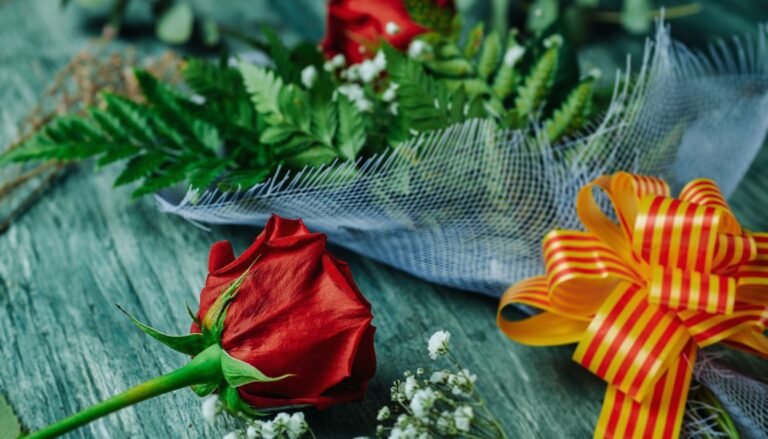Kaiseki Ryori, Kyoto Japan
In the ancient streets of Kyoto, where centuries-old temples stand in silent dignity, another form of Japanese artistry flourishes behind wooden sliding doors: Kaiseki Ryori. This exquisite multi-course dining tradition represents the pinnacle of Japanese haute cuisine, where each dish is a carefully orchestrated symphony of flavor, texture, and visual beauty. More than a meal, Kaiseki is a meditation on the seasons, a celebration of local ingredients, and a testament to Japan’s profound culinary philosophy.
Table of Contents
Historical and Cultural Significance
Kaiseki’s origins trace back to the 16th century, emerging from two distinct traditions: the simple meals served during tea ceremonies (cha-kaiseki) and the elaborate dishes prepared for nobility (daimyo cuisine). In Kyoto, the former capital of Japan for over a thousand years, Kaiseki evolved into its most refined form.
The tradition embodies essential Japanese cultural concepts:
- Shun (旬) – the celebration of ingredients at their peak season
- Wabi-sabi (侘寂) – finding beauty in simplicity and imperfection
- Omotenashi (おもてなし) – wholehearted hospitality
- Ichigo ichie (一期一会) – treasuring each moment as unique and unrepeatable
Each Kaiseki meal is guided by these principles, creating an experience that transcends mere dining to become a form of cultural art.
Ingredients and Preparation
Kaiseki relies on the finest seasonal ingredients and precise preparation techniques:
Core Principles:
- Seasonal ingredients (shun-no-mono)
- Local sourcing (chisan-chisho)
- Minimal seasoning to highlight natural flavors
- Precise cooking techniques
- Artistic presentation
Traditional Course Structure:
- Sakizuke (先付) – Appetizer
- Suimono (吸物) – Clear soup
- Mukōzuke (向付) – Sashimi course
- Hassun (八寸) – Expression of the season
- Futamono (蓋物) – Lidded dish
- Yakimono (焼物) – Grilled course
- Nimono (煮物) – Simmered dish
- Sunomono (酢の物) – Vinegared dish
- Mizumono (水物) – Dessert
Where to Try It
Kyoto offers various levels of Kaiseki experiences:
Traditional Ryotei:
- Kikunoi – Three Michelin stars, headed by Master Chef Yoshihiro Murata
- Hyotei – Operating for over 400 years
- Kitcho Arashiyama – Ultimate luxury Kaiseki
- Gion Sasaki – Intimate traditional setting
Modern Interpretations:
- Sodoh – Contemporary takes on tradition
- Miyamasou – Mountain retreat Kaiseki
- Tempura Matsu – Innovative Kaiseki with tempura focus
Eating Etiquette and Customs
Understanding proper etiquette is crucial for the Kaiseki experience:
Essential Guidelines:
- Remove shoes before entering
- Bow slightly when greeting
- Wait for the host’s cue to begin eating
- Never stick chopsticks vertically in rice
- Lift soup bowls to drink
Course-specific Etiquette:
- Appreciate each dish’s presentation before eating
- Sample different components in suggested order
- Complete each course before the next arrives
- Express gratitude using “Gochisōsama deshita” after the meal
Seasonal Considerations
Kaiseki celebrates Japan’s distinct seasons:
Spring (March-May):
- Cherry blossom-inspired presentations
- Young bamboo shoots
- Spring vegetables
- Sakura-themed desserts
Summer (June-August):
- Cooling presentations
- Ayu (sweetfish)
- Cold noodles
- Light, refreshing flavors
Autumn (September-November):
- Matsutake mushrooms
- Fall colors in presentation
- Pacific saury
- Root vegetables
Winter (December-February):
- Hot pot dishes
- Snow-themed presentations
- Crab and winter fish
- Hearty root vegetables
Modern Interpretations
While respecting tradition, contemporary chefs bring new perspectives:
Modern Elements:
- Fusion techniques
- International ingredients
- Contemporary plating
- Innovative cooking methods
Traditional Aspects Maintained:
- Seasonal focus
- Course progression
- Local ingredient emphasis
- Artistic presentation
Practical Information and Travel Tips
Essential knowledge for enjoying Kaiseki:
Booking and Timing:
- Reserve at least 1-3 months in advance
- Plan for 2-3 hours per meal
- Arrive 5-10 minutes early
- Confirm cancellation policies
Price Considerations:
- Average cost: ¥15,000-50,000 per person
- More expensive during peak seasons
- Lunch typically more affordable
- Some require credit card deposits
Important Tips:
- Dress formally but comfortably
- Inform about dietary restrictions when booking
- Learn basic Japanese phrases
- Bring cash (some establishments don’t accept cards)
Communication:
- Use hotel concierge for reservations
- Request English-speaking staff if needed
- Bring translation app
- Learn basic dining vocabulary
Savor Every Moment: Making Your Kaiseki Journey Memorable
Embrace the philosophy of “ichigo ichie” – each Kaiseki experience is unique and cannot be replicated. Allow yourself to be fully present, observing the subtle seasonal references in each dish, appreciating the artistry of presentation, and savoring the fleeting nature of each moment. Remember, you’re not just enjoying a meal; you’re participating in a centuries-old tradition that embodies the very essence of Japanese cultural refinement.













